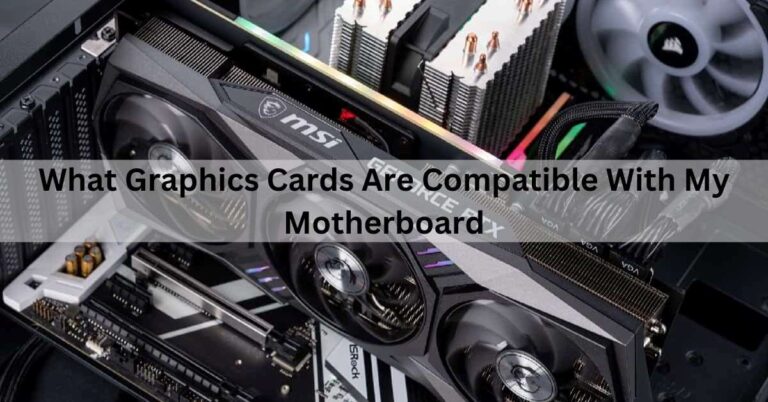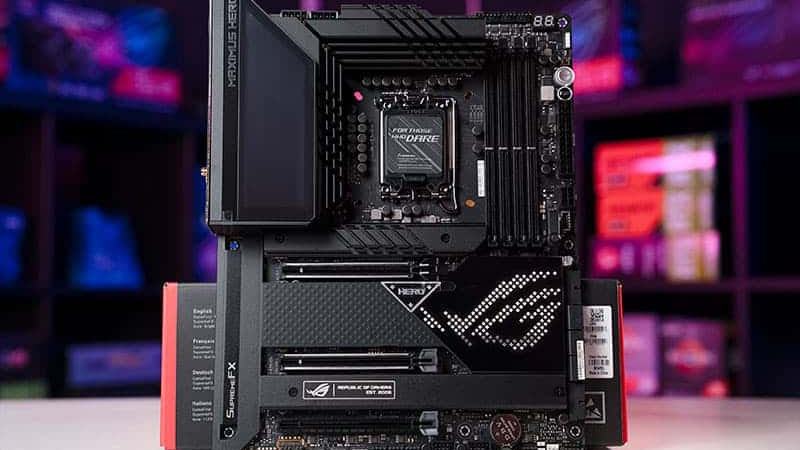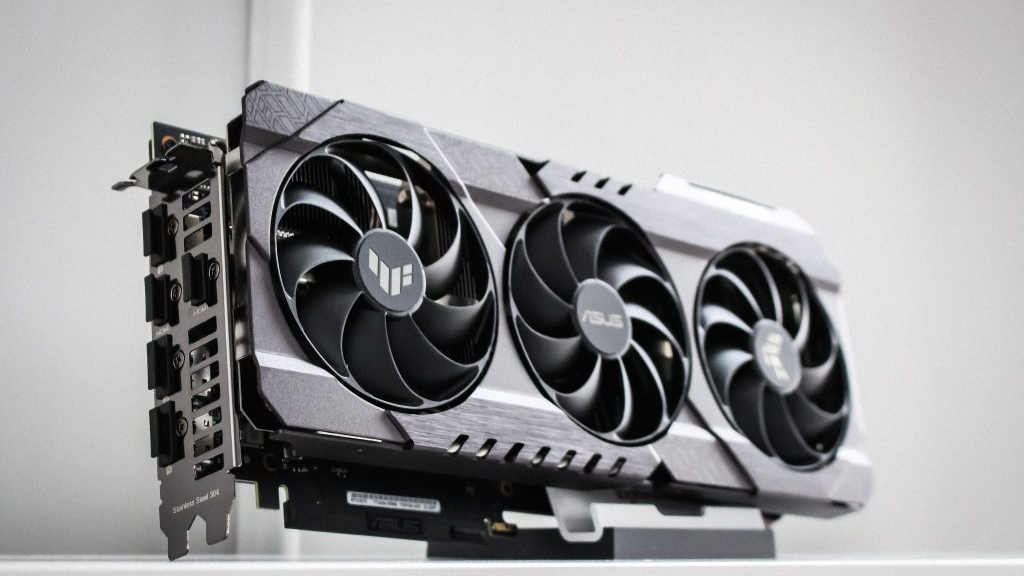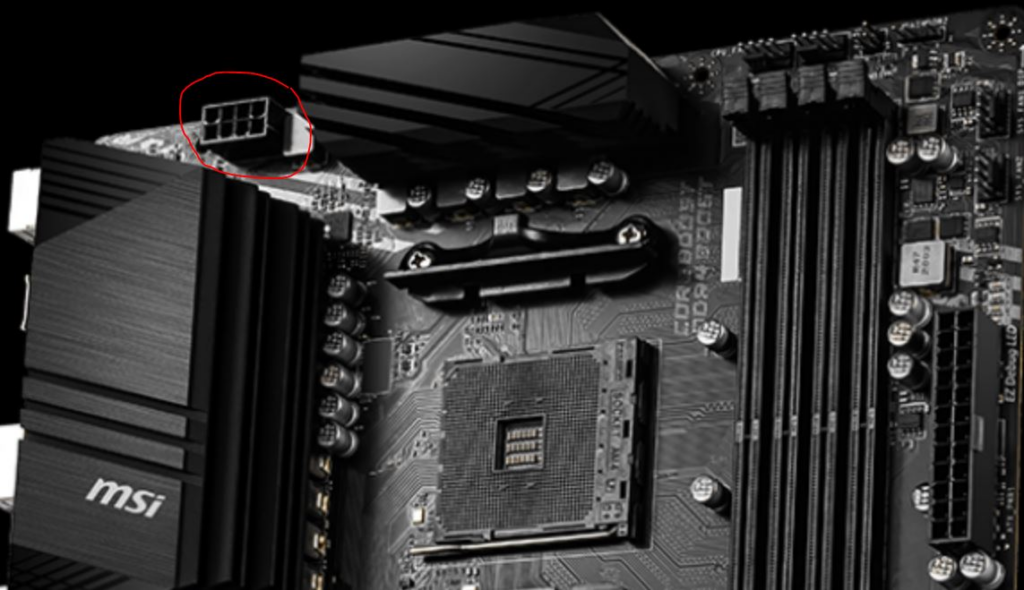
In today’s gaming and professional computing world, the graphics card (GPU) is a critical component. Whether you’re upgrading your system for better performance or building a new one from scratch, ensuring that your graphics card is compatible with your motherboard is essential.
“Compatibility between your graphics card and motherboard depends on factors like the type of interface (such as PCIe). Also, check that your power supply and computer case can support the card’s power needs and size.”
This article will guide you through understanding the intricacies of compatibility, helping you make an informed decision and unlock all hidden secrets.
Table of Contents
What is a motherboard?

A motherboard is the main circuit board in a computer that connects all the components, such as the CPU, memory, and storage. It allows these parts to communicate and work together, making the computer function properly.
What is a Graphics Card?
A graphics card is a computer component that handles rendering images, videos, and animations. It improves visual performance, especially for gaming and graphic-intensive tasks, by processing and displaying visuals more efficiently than the basic motherboard graphics.
Importance of Compatibility Between Graphics Card and Motherboard
Compatibility between the graphics card and motherboard is important to ensure smooth performance. A mismatched card may not fit, work properly, or reach its full potential. Always check slot type, power needs, and size before buying.
Understanding Graphics Card Compatibility
1. Types of Graphics Cards (NVIDIA, AMD)
Graphics cards mainly come from two brands: NVIDIA and AMD. NVIDIA is known for its GeForce series, while AMD offers the Radeon series. Both provide a range of options for gaming, design, and other tasks, depending on your needs.
2. Key Components of a Motherboard
The key components of a motherboard include the CPU socket, RAM slots, PCIe slots, power connectors, and chipset. These parts connect and control the computer’s hardware, allowing the CPU, memory, and other components to work together efficiently.
3. PCIe Slots and Their Role in Compatibility
PCIe slots on a motherboard are where you connect components like graphics cards. The type and number of PCIe slots determine what devices you can install, making them important for ensuring compatibility with your hardware upgrades.
Factors Affecting Compatibility
1. Motherboard Size (ATX, Micro ATX, Mini ITX)
Motherboards come in three main sizes: ATX, Micro ATX, and Mini ITX. ATX is the largest, offering more slots and features. Micro ATX is smaller with fewer slots, while Mini ITX is the smallest, ideal for compact builds.
2. PCIe Slot Versions and Their Impact
PCIe slot versions affect the speed and performance of connected devices, like graphics cards. Newer PCIe versions provide faster data transfer, improving overall performance. However, most devices are backward-compatible, so they can work with older PCIe slots, though at reduced speeds.
3. Power Supply Requirements
Power supply requirements refer to the amount of power your computer components need to run properly. Ensure your power supply has enough wattage and the right connectors to support your CPU, GPU, and other devices without issues.
BIOS Compatibility
BIOS compatibility ensures that your computer’s hardware, like the CPU or graphics card, works well with your motherboard. Before upgrading, check if your BIOS is up-to-date to avoid issues with new components.
Space and Cooling Considerations
When building a PC, consider space and cooling. Ensure your case has enough room for components and proper airflow. Use suitable fans to keep everything cool, preventing overheating and ensuring smooth performance for your computer.
How can I know what graphics card my motherboard can handle?

Can you know what graphics card your motherboard can handle, here is it: check if it has a PCIe slot. Then, verify the power supply and make sure the card fits in your case. You can also check the motherboard’s manual for details.
Are all graphics cards compatible with all motherboards?
No, not all graphics cards are compatible with all motherboards. Compatibility depends on factors like the PCIe slot, power supply, and available space in your PC case.
What graphic card is compatible with my motherboard?
To find a compatible graphics card, check if your motherboard has a PCIe slot, sufficient power supply, and space in your PC case. Use manufacturer tools to verify compatibility.
Check if graphics card is compatible with motherboard?
You can check compatibility by ensuring your motherboard has a PCIe slot and enough power for the graphics card. Manufacturer websites and compatibility tools can help confirm this.
Motherboard compatibility with graphics card?
Motherboard compatibility with a graphics card depends on having a PCIe slot and a power supply that meets the card’s requirements. Always check the card’s specifications and your motherboard’s features.
How to know which graphics card is compatible with my motherboard?
To know which graphics card is compatible, ensure your motherboard has the correct PCIe slot and enough power. Use online tools or manufacturer guidelines to confirm compatibility.
What graphics card will fit my motherboard?
A graphics card that fits your motherboard needs a PCIe slot and enough space in your PC case. Check the card’s size and power needs against your system’s specifications.
How to know if graphics card is compatible with motherboard?
You can know if a graphics card is compatible by checking for a PCIe slot on your motherboard and ensuring your power supply meets the card’s requirements. Use online compatibility tools for help.
Graphics cards compatible with my motherboard?
Graphics cards compatible with your motherboard should match the PCIe slot, power supply, and available space in your PC case. Use manufacturer websites to find a list of compatible cards.
Graphic cards compatible with my motherboard?
Compatible graphic cards depend on your motherboard’s PCIe slot and power supply. Ensure the card also fits within your PC case. Check online tools or the manufacturer’s site for compatibility details.
How do I know what graphics card is compatible with my motherboard?

To find out if a graphics card is compatible with your motherboard, check if the motherboard has a PCIe x16 slot. Also, make sure your power supply can handle the new card’s power needs and check for physical space in your case.
Do all graphics cards fit all motherboards?
No, not all graphics cards fit all motherboards. You need to check if your motherboard has the correct PCIe slot and if your case has enough space. Also, make sure your power supply can handle the new card.
How to find a compatible graphics card?
To find a compatible graphics card, check your motherboard’s PCIe slot type, ensure your power supply can handle the card, and verify the card’s physical size fits in your case. Also, check if your BIOS supports the card.
How do I know what graphics card to get?
You can choose the right graphics card, check what games or software you use, your current computer’s specs, and your budget. Make sure the card fits your motherboard’s slot and meets your power supply requirements.
which graphics cards are compatible with my motherboard
You can check your motherboard’s PCIe slot type and power supply. Most modern motherboards support PCIe x16 cards. Verify compatibility with your specific motherboard model for the best results.
Motherboard graphics card compatibility checker online
A motherboard graphics card compatibility checker online is a tool that helps you see if a specific graphics card will work with your motherboard. Just enter your motherboard and GPU details to check for compatibility.
What graphics cards are compatible with my motherboard gaming
To find compatible graphics cards for gaming, check if your motherboard has a PCIe x16 slot. Choose a card that fits this slot and matches your system’s power and size requirements for optimal performance.
What graphics cards are compatible with my motherboard laptop
To find a compatible graphics card for your laptop motherboard, check the laptop’s specifications or manual. Most laptops have built-in graphics, and upgrading is usually not possible. For better graphics, consider upgrading to a newer laptop with dedicated graphics.
What graphics cards are compatible with my motherboard nvidia
To find out which NVIDIA graphics cards are compatible with your motherboard, check the motherboard’s PCIe slot type and version. Ensure the card fits physically and that your power supply can support it. Consult your motherboard’s manual for detailed compatibility.
What graphics cards are compatible with my motherboard gigabytes

To find compatible graphics cards for your Gigabyte motherboard, check the PCIe slot type (usually PCIe x16) and ensure the card fits physically and has enough power. Refer to your motherboard’s manual or Gigabyte’s website for specific details.
What graphics cards are compatible with my motherboard MSI
To find compatible graphics cards for your MSI motherboard, check the PCIe slot type and the card’s physical size. Ensure your power supply meets the card’s requirements and verify BIOS compatibility if needed.
What graphics cards are compatible with my motherboard Dell
For a Dell motherboard, check the PCIe slot type and power supply. Compatible graphics cards will fit in the PCIe x16 slot and match your PSU’s power. Popular brands include NVIDIA and AMD. Ensure the card is supported by your motherboard model.
What Graphics Cards Are Compatible With My PC?
To find out which graphics cards work with your PC, check your motherboard’s PCIe slot type and power supply requirements. Also, make sure the card fits in your case and is compatible with your system’s BIOS.
How do I know which graphics cards are compatible with my motherboard?
To find out which graphics cards are compatible with your motherboard, check the PCIe slot type on your motherboard and compare it with the card’s requirements. Also, verify your power supply and case space to ensure a good fit.
How do I know if my power supply is compatible with my motherboard?
To check if your power supply is compatible with your motherboard, match the power supply’s connector types and wattage with the motherboard’s requirements. Ensure the connectors fit and the power supply provides enough wattage for all components.
How do I find out which motherboard is compatible with which graphic card?

To find out which motherboard works with a graphic card, check if the motherboard has the right PCIe slot (usually x16) and supports the card’s power needs. Also, confirm that the card fits in your PC case.
How do I know if my power supply or motherboard is bad?
To check if your power supply or motherboard is bad, look for signs like random shutdowns, system crashes, or no power at all. Testing with known working parts or using diagnostic tools can help identify the problem.
How do we know if a graphics card is compatible with our motherboard?
To check if a graphics card is compatible with your motherboard, ensure it has a PCIe x16 slot. Verify that your power supply meets the card’s requirements and check that your case has enough space for the card.
Can I use an old power supply with a new motherboard?
Yes, you can use an old power supply with a new motherboard if it has the correct connectors and enough wattage. Make sure it meets the power needs of your new components and is in good condition.
How do I know if my power supply is sufficient for a new graphics card?
To check if your power supply is enough for a new graphics card, look at its wattage rating. Ensure it meets or exceeds the card’s power requirements. Also, check that it has the right connectors for the card.
Can a motherboard kill a graphics card?
No, a motherboard itself usually can’t kill a graphics card. However, issues like power supply problems, overheating, or incorrect installation can damage both. Always ensure proper installation and compatibility to keep your graphics card safe.
Can a blown power supply damage a motherboard?
Yes, a blown power supply can damage a motherboard. When a power supply fails, it might send electrical surges that can harm the motherboard and other components. It’s important to replace a faulty power supply to avoid such risks.
Does the power supply have to be compatible with the motherboard?

Yes, the power supply must be compatible with the motherboard. It needs to provide enough power and connect correctly to the motherboard’s ports. Ensure your power supply has the right connectors and sufficient wattage for your system’s needs.
FAQS:
1. How do I know if a graphics card will fit my motherboard?
Ensure it has a PCIe x16 slot. Also, check your case size to confirm there’s enough space for the card. Ensure your power supply can support the card’s requirements.
2. Can any graphics card work with any motherboard?
No, not all graphics cards work with every motherboard. The motherboard must have a compatible PCIe slot, and it should meet the card’s power and size requirements. Always check your motherboard’s specifications to ensure compatibility.
3. What happens if my motherboard is incompatible with my graphics card?
If your motherboard is incompatible with your graphics card, you might face issues like the card not fitting properly, not powering on, or poor performance. To fix this, you may need a new motherboard or adjust your system setup.
4. Are there specific graphics cards that are compatible with my motherboard?
Yes, check if your motherboard has a PCIe x16 slot. Most modern graphics cards need this slot to function. Refer to your motherboard’s manual for details on compatible cards.
5. Do I need to check the PCIe version of my motherboard for compatibility?
Yes, ensure your motherboard supports the PCIe version required by your graphics card (e.g., PCIe 4.0 for newer cards) for optimal performance.
6. Can I use older graphics cards with a newer motherboard?
Yes, older graphics cards can work with newer motherboards as long as they have a PCIe x16 slot. Make sure the power supply meets the card’s needs.
Conclusion:
To ensure your graphics card works well with your motherboard, check if your motherboard has a PCIe x16 slot and if it matches the card’s requirements. Also, verify that your power supply is adequate and that the card fits in your case. Proper compatibility ensures smooth performance and avoids potential issues.